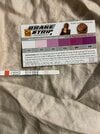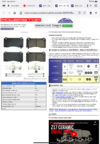First of all, apologies as I’m sure this must have been discussed in the UK forum but I couldn’t find anything.
I’m shortly going to take delivery of a Model 3 and have been perusing the manual.
It’s suggested in the manual that the brake callipers need to be lubricated every year when road salt is used (like in the UK) and the tires need to be rotated every 6250 miles.
In my 22 years of driving I’ve never rotated tires, I just change them as a pair when either the front or back gets low on tread. Am I alone here? Should I have been rotating all along? Or is this a Tesla specific problem? Reading online this seems to be common practice in the States.
I’ve also never gone out of my way to have the brake callipers lubricated and I’ve never seen it itemised on a ICE service, outside of having brakes replaced when worn.
What is the general consensus amongst UK Tesla drivers?
I’m shortly going to take delivery of a Model 3 and have been perusing the manual.
It’s suggested in the manual that the brake callipers need to be lubricated every year when road salt is used (like in the UK) and the tires need to be rotated every 6250 miles.
In my 22 years of driving I’ve never rotated tires, I just change them as a pair when either the front or back gets low on tread. Am I alone here? Should I have been rotating all along? Or is this a Tesla specific problem? Reading online this seems to be common practice in the States.
I’ve also never gone out of my way to have the brake callipers lubricated and I’ve never seen it itemised on a ICE service, outside of having brakes replaced when worn.
What is the general consensus amongst UK Tesla drivers?




